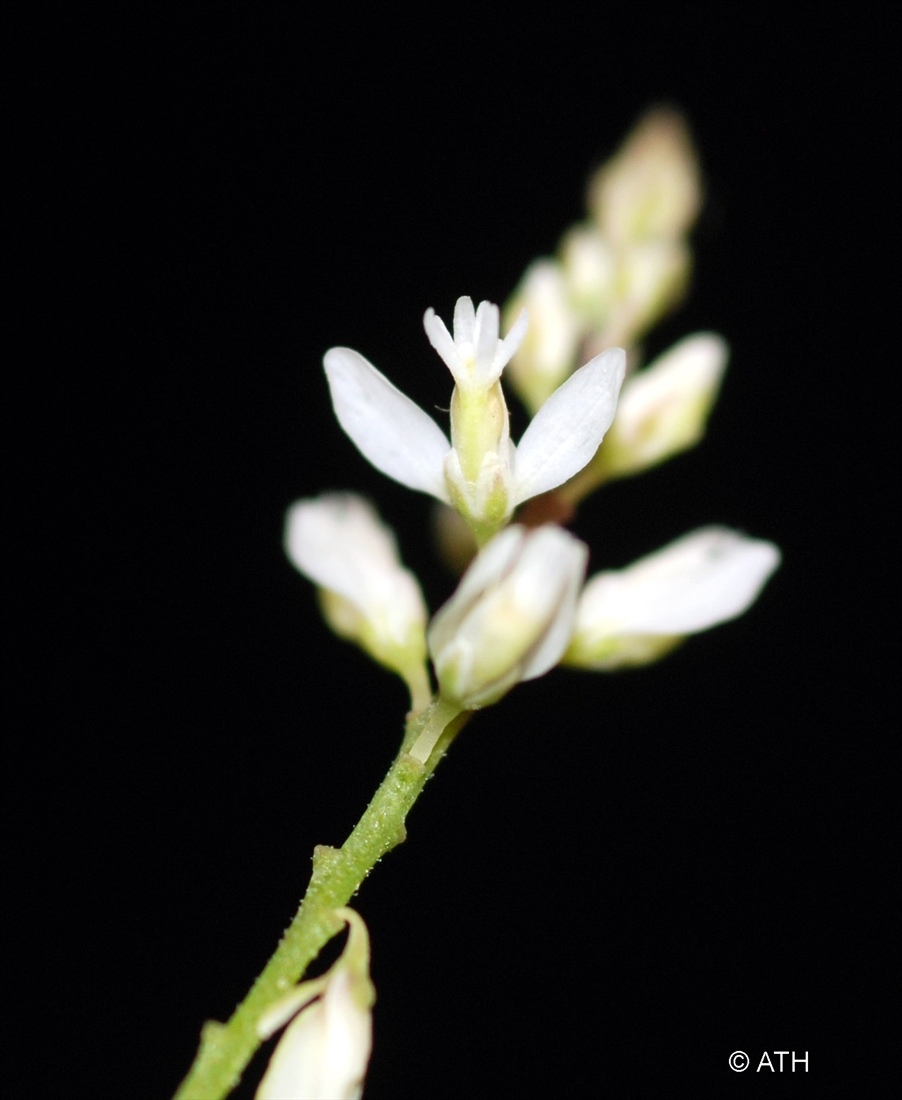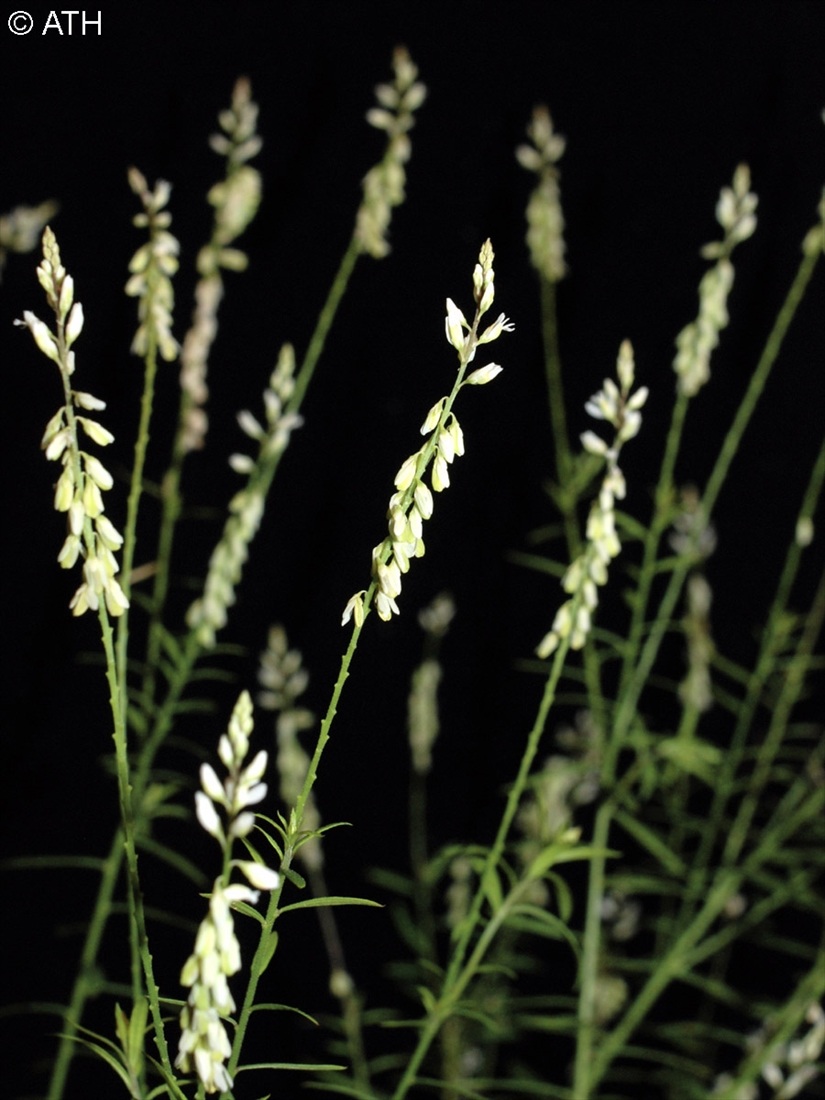Australian Tropical Rainforest Plants - Online edition
Polygala paniculata L.
Linnaeus, C. von (1760) Amoenitates Academici 5: 402. Type: Jamaica, Browne s.n.
Erect much-branched annual herb, 10-50 cm high, woody at base; stems minutely scabrid to glandular-hairy.
Flowers borne in racemes 40-200 mm long. Pedicels 0.5-0.8 mm long. Flowers small, 2.5-3 x 1.5 mm. Sepals dimorphic, 3 sepals 0.8-11 x 0.5 mm, 2 sepals ca. 2 x 1 mm. Petals dimorphic, 2 petals white, ca. 2 mm long, 1 petal ca. 2 mm long with 6 white appendages at the apex enveloping the stamens and the ovary. Anthers ca. 0.5 mm long, filaments less than 0.5 mm long. Ovary 0.4-0.5 mm long. Stigma cup-shaped. Ovules one per locule.
Capsule elliptic-oblong, c. 2 mm long, 2-locular, clothed in fine hairs, 'aril' 2-lobed. Embryo white, ca. 1 mm long, cotyledons ca. 0.5 mm long, about as wide as the radicle. Seeds black, oblong, densely white pubescent; strophiole small, with 2 membranous appendages.
Features not available.
naturalised species that occurs in CYP, NEQ, CEQ and southwards to north-eastern New South Wales. Altitudinal range from near sea level to 1100 m. Grows along roads and tracks and disturbed areas in rainforest, Eucalypt forest, Melaleuca forest, vine forest and Eucalypt woodland. Widespread as a weed in other countries.
A weed of cultivation and agriculture, a very successful pioneer. The roots smell strongly of liniment when crushed, and are a source of methyl saclicylate.








